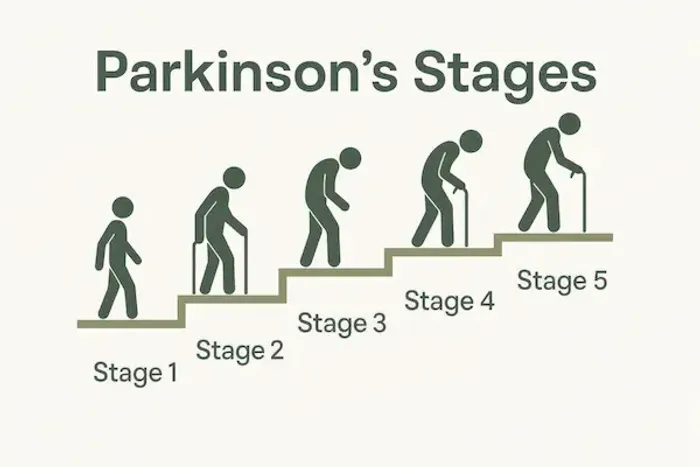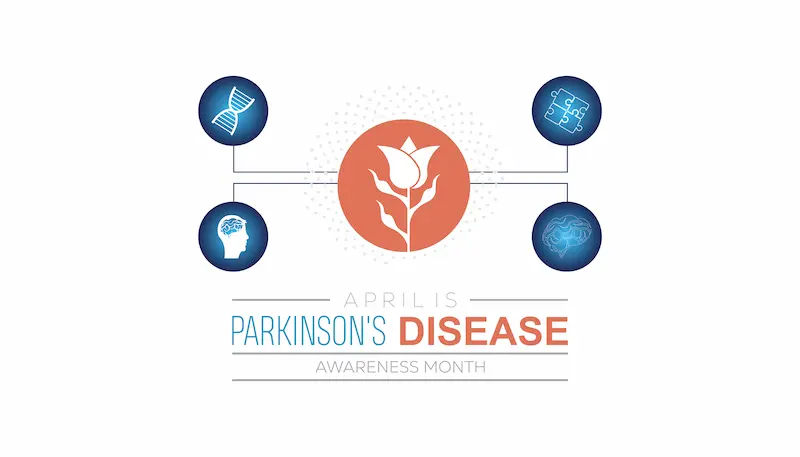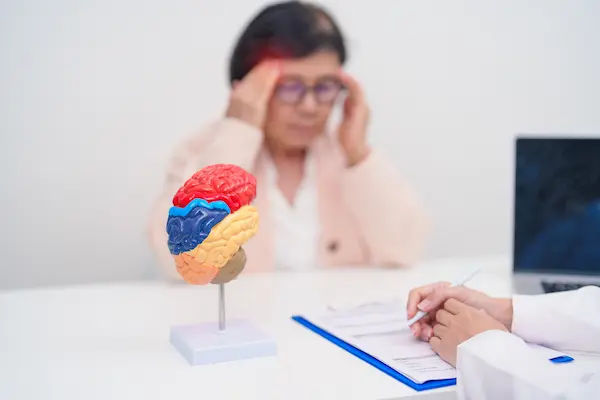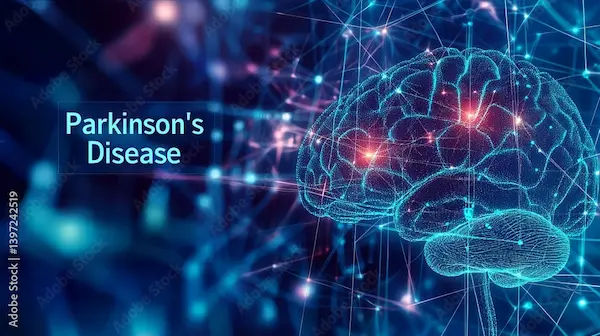Signs Of Parkinsons Disease And Stages
Know about the parkinsons disease, what it is, warning symptoms, motor and non-motor symptoms, stages to identify warning signs and more.

Written by Dr. Rohinipriyanka Pondugula
Reviewed by Dr. M L Ezhilarasan MBBS
Last updated on 7th Oct, 2025

Introduction
Parkinson's disease is a progressive neurodegenerative disorder that affects millions of people worldwide. While often associated with a tell-tale tremor, the reality of Parkinson's is far more complex, encompassing a wide range of motor and non-motor symptoms that evolve. Understanding the early signs and the typical stages of Parkinson's disease is crucial for patients, families, and caregivers. This comprehensive guide will walk you through the fundamental aspects of Parkinson's, from the first whispers of symptoms to the established stages of the condition. We'll demystify the medical terminology, explain what to expect as the disease progresses, and highlight the importance of a proactive management plan. Remember, early recognition and intervention can make a significant difference in maintaining quality of life. If you or a loved one is experiencing persistent symptoms that concern you, consulting a neurologist is the most important first step.
What is Parkinson's Disease? The Basics
Parkinson's disease is a brain disorder that leads to difficulties with movement, balance, and coordination. It results from the loss of nerve cells (neurons) in a specific area of the brain called the substantia nigra. These neurons are responsible for producing a vital chemical messenger known as dopamine.
Consult a Top Neurologist for Personalised Advice
The Role of Dopamine
Dopamine acts as a neurotransmitter, facilitating smooth, coordinated muscle movement by carrying signals between the brain and the body. When approximately 60-80% of these dopamine-producing cells are damaged or lost, the characteristic motor symptoms of Parkinson's begin to appear. The cause of this cell death is not entirely known, though a combination of genetic and environmental factors is believed to play a role. It's important to note that Parkinson's itself is not fatal, but its complications can be serious.
The Early Warning Signs of Parkinson's Disease
The onset of Parkinson's is usually gradual, and early signs can be easy to dismiss as normal signs of ageing or stress.
However, recognising these clues is key to early diagnosis.
Motor Symptoms: The Most Recognisable Clues
These are the symptoms most people associate with Parkinson's disease.
Tremor: The Classic Symptom
A slight shaking or tremor, often starting in a finger, thumb, hand, or chin while the limb is at rest, is a hallmark sign.
This "pill-rolling" tremor between the thumb and forefinger usually disappears during voluntary movement and sleep.
Bradykinesia: Slowness of Movement
This is one of the most disabling early symptoms. Over time, Parkinson's disease may reduce your ability to move,
making simple tasks difficult and time-consuming. Your steps may become shorter, or you might find your feet dragging
when you walk.
Rigidity: Muscle Stiffness
Muscle stiffness can occur in any part of the body. This stiffness can be painful and limit your range of motion. It's often
described as "cogwheel" or "lead-pipe" rigidity by physicians.
Postural Instability: Balance Problems
Impaired balance and coordination, known as postural instability, can lead to a forward or backward lean and an
increased risk of falls. This symptom typically appears in the later stages of the disease.
Non-Motor Symptoms: The Less Obvious Indicators
Often overlooked, these symptoms can appear years before motor issues and significantly impact quality of life.
Loss of Smell (Anosmia)
A reduced ability to smell (anosmia) or distinguish between smells is a very common early warning sign, sometimes
occurring a decade before motor symptoms.
Sleep Disorders and REM Sleep Behaviour Disorder
This involves physically acting out vivid, often unpleasant dreams with vocal sounds and sudden, often violent, arm and
leg movements during REM sleep.
Mood Changes: Depression and Anxiety
Depression and anxiety are common non-motor symptoms of Parkinson's. They can be a reaction to the diagnosis or a
direct result of changes in brain chemistry.
Autonomic Dysfunction
This includes constipation, low blood pressure leading to dizziness when standing up (orthostatic hypotension),
excessive sweating, and urinary issues.
Understanding the Stages of Parkinson's Disease
Parkinson's is a progressive condition, meaning symptoms change and intensify over time. To standardise this progression, clinicians often use the Hoehn and Yahr scale.
The Hoehn and Yahr Scale: A Clinical Measurement
This scale divides the progression of motor symptoms into five stages. It provides a snapshot of a patient's disability
level and is useful for tracking the disease's course.
Stage 1: Unilateral Symptoms (Mild)
Symptoms are mild and appear on only one side of the body. Tremors and other movement symptoms may be
noticeable but not disabling. Daily activities are largely unaffected.
Stage 2: Bilateral Symptoms (Mild to Moderate)
Symptoms begin to affect both sides of the body. Posture and gait may change, but balance is not yet significantly
impaired. Tasks may take longer to complete.
Stage 3: Mid-Stage with Balance Impairment (Moderate)
This is a significant turning point. Loss of balance and slowness of movement are hallmarks. Falls become more common. While the person is still fully independent, symptoms significantly impair activities like dressing and eating.
Stage 4: Severe Disability but Still Able to Walk (Advanced)
Symptoms are severe and limiting. The person may be able to stand without assistance but will likely need a walker for
mobility. Assistance with daily activities is required, and living alone may be unsafe.
Stage 5: Wheelchair-Bound or Bedridden (Advanced)
In this most advanced stage, stiffness in the legs can make it impossible to stand or walk. The person requires constant
nursing care. Hallucinations and delusions may also occur.
Diagnosis and When to Seek Help
There is no single test for Parkinson's. Diagnosis is based on medical history, a review of signs and symptoms, and a
neurological and physical examination. A doctor may suggest a carbidopa-levodopa trial; significant improvement with
this medication often confirms a Parkinson's diagnosis. If you notice persistent symptoms like a tremor, stiffness, or
slowness of movement, it is essential to consult a doctor. Early intervention can help manage symptoms effectively. For
a convenient and expert consultation, you can book an appointment with a neurologist online through Apollo24|7 to discuss your concerns.
Living Well with Parkinson's: Management and Treatment
While there is no cure, treatments can dramatically improve symptoms. The primary approach is medication, primarily
levodopa, to replenish dopamine levels. Physical, occupational, and speech therapy are vital for maintaining mobility
and independence. In some cases, a surgical procedure called Deep Brain Stimulation (DBS) may be recommended. A
healthy diet, regular exercise, and a strong support system are equally important components of comprehensive care.
Conclusion
Recognising the signs and understanding the stages of Parkinson's disease is the first step toward empowerment and effective management. The journey with Parkinson's is unique for every individual, and the progression can vary widely. While the diagnosis can be daunting, it's important to remember that modern medicine offers a robust toolkit for symptom control. A proactive approach—seeking early diagnosis, adhering to a treatment plan, and embracing a healthy lifestyle—can profoundly impact one's quality of life. Research is ongoing, bringing new hope for better treatments and, ultimately, a cure. If you have concerns about any symptoms, do not hesitate to seek professional medical guidance. Taking action early can help you navigate this path with greater confidence and support.
Consult a Top Neurologist for Personalised Advice
Consult a Top Neurologist for Personalised Advice

Dr. Avinash Gupta
Neurologist
12 Years • MBBS, DNB - Neurology
Bilaspur
Apollo Hospitals Seepat Road, Bilaspur
(150+ Patients)

Dr. Uddalak Chakraborty
Neurologist
8 Years • MBBS, MD(GENL.MED.),DM(NEUROLOGY)
Kolkata
MCR SUPER SPECIALITY POLY CLINIC & PATHOLOGY, Kolkata
(25+ Patients)

Dr. Joydeep Biswas
Neurologist
15 Years • MBBS, DNB General Medicine, DNB Neurology
Barasat
Diab-Eat-Ease, Barasat

Dr Debnath Dwaipayan
Neurosurgeon
9 Years • MBBS, MS(Gen. Surgery), DrNB (Neurosurgery)
Delhi
Apollo Hospitals Indraprastha, Delhi

Dr. Ganeshgouda Majigoudra
Neurologist
10 Years • MBBS, MD ( GENERAL MEDICINE) DM (NEUROLOGY)
Bengaluru
Apollo Clinic, JP nagar, Bengaluru
Consult a Top Neurologist for Personalised Advice

Dr. Avinash Gupta
Neurologist
12 Years • MBBS, DNB - Neurology
Bilaspur
Apollo Hospitals Seepat Road, Bilaspur
(150+ Patients)

Dr. Uddalak Chakraborty
Neurologist
8 Years • MBBS, MD(GENL.MED.),DM(NEUROLOGY)
Kolkata
MCR SUPER SPECIALITY POLY CLINIC & PATHOLOGY, Kolkata
(25+ Patients)

Dr. Joydeep Biswas
Neurologist
15 Years • MBBS, DNB General Medicine, DNB Neurology
Barasat
Diab-Eat-Ease, Barasat

Dr Debnath Dwaipayan
Neurosurgeon
9 Years • MBBS, MS(Gen. Surgery), DrNB (Neurosurgery)
Delhi
Apollo Hospitals Indraprastha, Delhi

Dr. Ganeshgouda Majigoudra
Neurologist
10 Years • MBBS, MD ( GENERAL MEDICINE) DM (NEUROLOGY)
Bengaluru
Apollo Clinic, JP nagar, Bengaluru
More articles from Parkinsons Disease
Frequently Asked Questions
1. What is the life expectancy for someone with Parkinson's disease?
Parkinson's disease itself is not fatal. People with Parkinson's have a near-normal life expectancy. However, complications from the disease, such as pneumonia or falls, can be serious. Quality of life and longevity are greatly improved with proper medical care and management.
2. What is the difference between Parkinson's disease and essential tremor?
A key difference is when the tremor occurs. Parkinson's tremor is most prominent at rest and often decreases with movement. An essential tremor typically occurs during action (like holding a cup or writing) and is less common at rest. Essential tremor also often runs in families.
3. Can Parkinson's disease be cured?
Currently, there is no cure for Parkinson's disease. However, there are highly effective treatments that focus on managing symptoms, improving mobility, and maintaining a good quality of life. Research into disease-modifying therapies is actively ongoing.
4. What are the non-motor symptoms of Parkinson's that appear years before diagnosis?
These 'prodromal' symptoms can include a loss of smell (anosmia), chronic constipation, REM sleep behaviour disorder (acting out dreams), and depression. Not everyone with these symptoms will develop Parkinson's, but they are recognised as strong early indicators.
5. How fast does Parkinson's disease progress?
The rate of progression varies significantly from person to person. Factors like age at onset and overall health can influence the speed. Some people may remain in the early stages for many years, while others may progress more quickly. A consistent treatment plan can help slow the functional decline.




